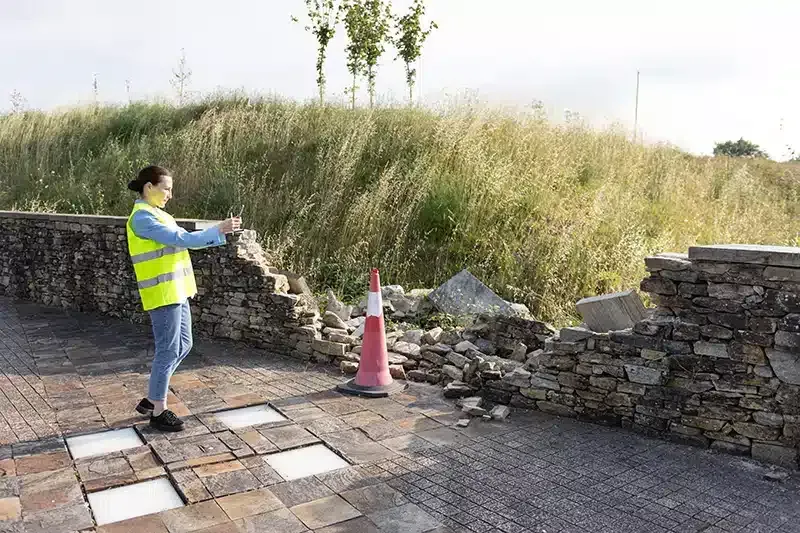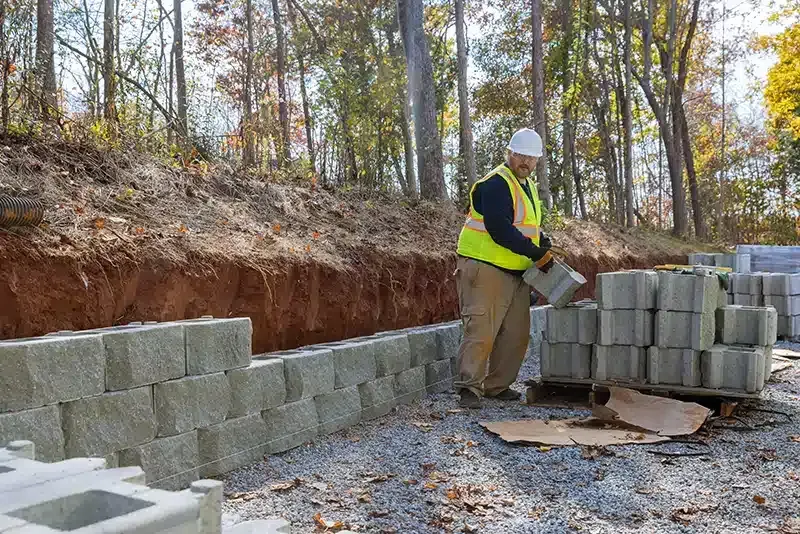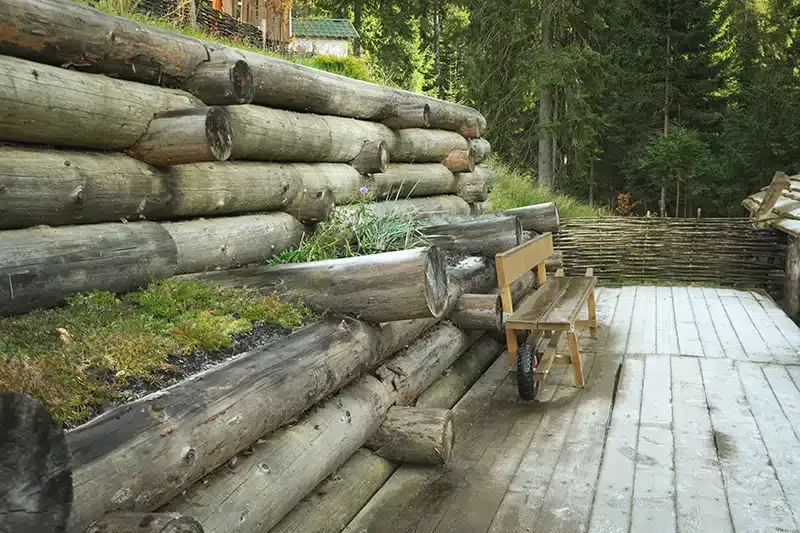What Safety Benefits Come With Professional Retaining Wall Construction?
When thinking about professional retaining wall construction, safety might not be the first consideration, but it plays a crucial role.
These walls are designed to offer improved stability, reducing the risk of landslides and potential damage to your property.
By incorporating proper drainage and erosion control, a well-constructed retaining wall can safeguard your home and landscape from unexpected hazards.
So, what key safety features should you look for, and how do they contribute to your property's long-term security?
Let’s dive deeper into this.
Enhanced Structural Integrity
When you opt for professional retaining wall construction, you're making an investment that goes beyond aesthetics. A well-constructed retaining wall provides vital support to your landscape, preventing soil displacement and enhancing the stability of your outdoor spaces.
This is particularly important for properties with slopes, where soil erosion can threaten the structural integrity of your home and paths.
Enhancing Structural Integrity
A professionally built retaining wall acts as a sturdy support system, safeguarding your landscape from the dangers of erosion. By addressing these issues, you ensure the long-term stability of your property’s foundation and prevent potential damage to pathways, gardens, and other outdoor areas.
- Prevent Soil Erosion: Protect your landscape from runoff.
- Support Outdoor Spaces: Ensure the stability of paths and garden areas.
Quality Materials and Expert Installation
Choosing professional installation ensures the use of durable materials and precise construction methods. Professionals understand the importance of effective drainage systems, which help prevent water accumulation behind the wall that can lead to weakening or collapse.
- Durable Materials: Build with quality for lasting results.
- Proper Drainage: Prevent water buildup and structural failure.
Safety and Long-Term Benefits
A well-designed retaining wall can also reduce the risk of landslides or soil shifts that might endanger both your landscape and your home. Investing in expert installation means you’re making a long-term commitment to the safety, security, and overall stability of your property.
- Reduce Risks: Prevent landslides and soil shifts.
- Peace of Mind: Ensure safety for your family and home.
Ultimately, investing in professional retaining wall construction provides lasting value, improving both the functionality and safety of your landscape while securing your home for years to come.
Improved Erosion Control
A professionally constructed retaining wall is an essential tool for enhancing both the structural integrity and erosion control of your property.
By investing in a well-designed wall, you’re protecting your landscape from the devastating effects of erosion, which can cause soil loss and jeopardize your property's safety.
Protecting Your Property from Erosion
Erosion can destabilize your property, leading to soil displacement and potentially compromising your home's foundation. A retaining wall creates a protective barrier that helps hold soil in place, preventing it from washing away during heavy rains or flooding.
- Soil Retention: Prevents soil loss and stabilizes the landscape.
- Protection from Rain and Flooding: Minimizes the impact of water on your property.
Effective Drainage and Water Redirection
If your property is situated on a slope or near water sources, a retaining wall becomes even more crucial. It acts as a shield, absorbing and redirecting water flow, effectively minimizing soil displacement and safeguarding your property.
- Redirect Water Flow: Reduces the risk of erosion caused by water.
- Water Management: Protects areas prone to flooding or heavy rainfall.
Material Choices for Optimal Erosion Control
Retaining walls can be constructed using materials specifically chosen for their ability to control erosion. Rocks, porous blocks, or other materials that allow natural drainage are excellent for maintaining soil stability without compromising the wall's effectiveness.
- Natural Drainage: Using porous materials prevents water buildup.
- Long-Term Protection: Ensures durability and soil stability.
A professionally built retaining wall not only offers significant erosion control but also preserves the aesthetic and structural stability of your property. It provides peace of mind by protecting your landscape from the risks of erosion while enhancing your outdoor environment.
Effective Drainage Solutions
Proper drainage is essential for maintaining the longevity and structural integrity of a retaining wall. Without it, water can build up behind the wall, creating hydrostatic pressure that can lead to cracks, shifting, and eventual failure. Professional retaining wall construction ensures that proper drainage is implemented to protect your investment.
Weep Holes for Efficient Water Flow
Weep holes are strategically placed openings in the wall that allow water to escape, reducing the build-up of pressure behind the structure. These holes help maintain the wall's stability by ensuring that water flows out efficiently, preventing the risk of damage.
- Pressure Relief: Weep holes prevent hydrostatic pressure from damaging the wall.
- Efficient Water Flow: Strategically placed for optimal drainage.
Gravel and Porous Drainage Layers
In addition to weep holes, a well-designed drainage layer made of gravel or porous materials is essential for redirecting water away from the wall. This layer helps prevent water from pooling and eroding the foundation, significantly reducing the risk of collapse.
- Water Redirection: Gravel or porous materials channel water away from the wall.
- Minimized Erosion Risk: Prevents water from undermining the wall’s foundation.
Drainage Pipe Systems for Added Protection
A drainage pipe system can be incorporated to channel excess water away from the retaining wall. This system ensures that water doesn’t accumulate and negatively affect the wall’s structure, prolonging its lifespan and maintaining its strength.
- Excess Water Management: Channels water away from the structure.
- Enhanced Wall Stability: Prevents water-related damage and extends lifespan.
-
In conclusion, effective drainage is a critical component of retaining wall construction. By prioritizing it, you ensure that your retaining wall remains functional, durable, and stable for many years, protecting your property from the damaging effects of water accumulation.


